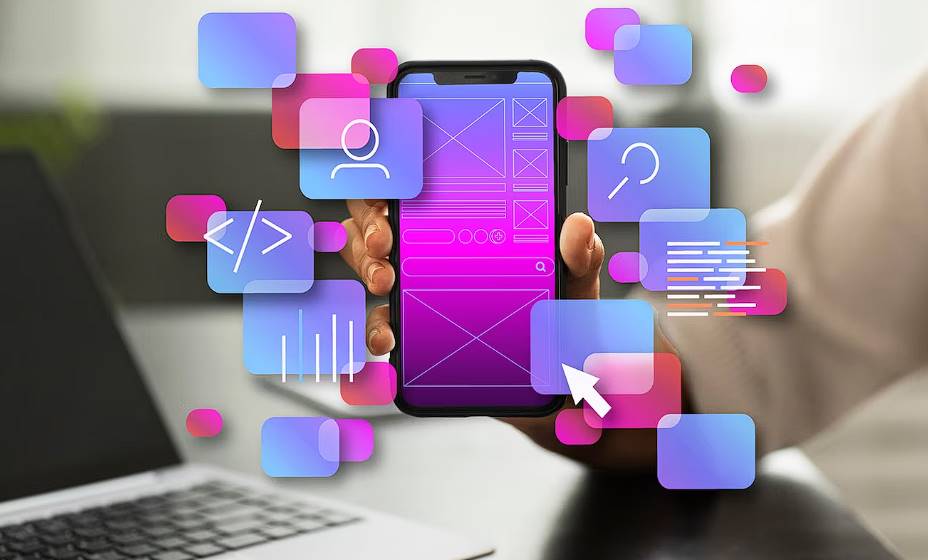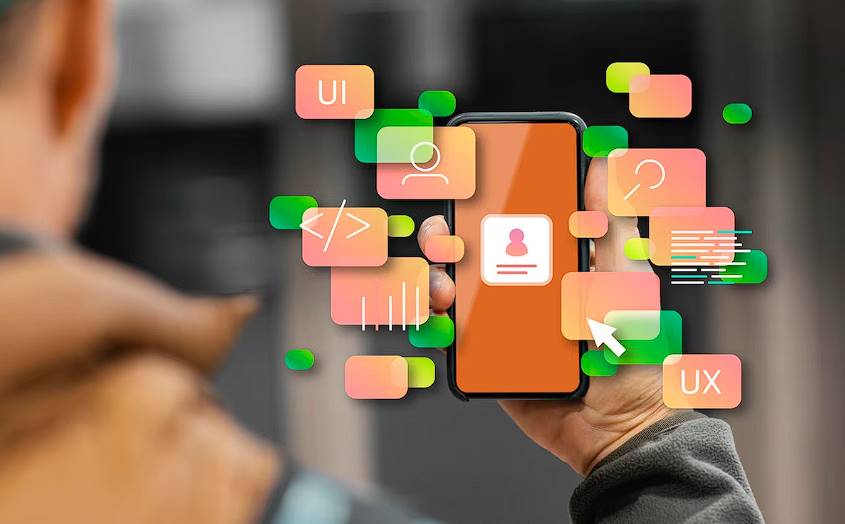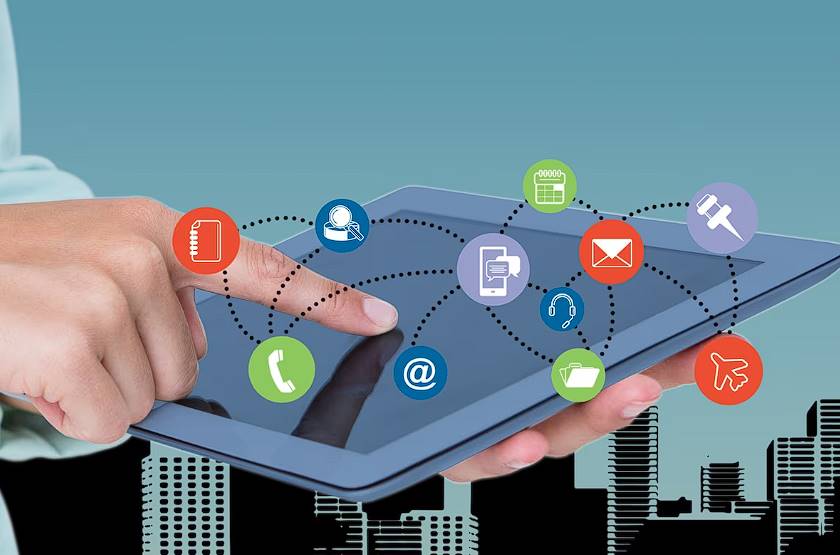"always connected" describes our culture in the modern digital era. The proliferation of smartphones, tablets, and other intelligent gadgets has created a network that has revolutionised how we live, learn, shop, and interact with one another. However, as our global community grows more interdependent, so do the threats and difficulties we face.
Mobile device management (MDM) has developed as a guardian to keep us safe, secure, and in control in the vast digital wilderness where personal and professional boundaries blur, data flows seamlessly, and cyber threats loom. In this piece, we will delve into the murky waters of MDM and illuminate its essential function in today's online ecosystem.
Come along as we explore the world of Mobile Device Management and learn why it has become such an essential resource for people from all walks of life and organisations. As we go on, you'll see how MDM acts as a sentinel, keeping us safe from the threats lurking in our digital world's murky depths. Let's take the plunge together and learn about MDM's importance in today's digital technology world.
What Exactly Is the Meaning of Mobile Device Management?
IT departments and administrators can benefit from Mobile Device Management (MDM) software, which was developed to aid in the management and protection of mobile gadgets like laptops, smartphones, tablets, and Internet of Things gadgets. MDM solutions allow for controlling all mobile endpoints, including personal and company-owned devices, and can be deployed in the cloud or on-premises. The goal of a mobile device management (MDM) system is to optimise the administration of devices, the efficiency of users, and the observance of policies.
Using MDM solutions, administrators may keep tabs on mobile devices that access critical company data and push uniform security guidelines to all such gadgets. Device health data is monitored, apps are approved or denied, devices are tracked down if misplaced, and security is implemented if stolen with the help of MDM solutions.
What Is the Function of Mobile Device Management?
The MDM server, housed in a data centre, and the MDM agent, installed on each managed device, are the two mainstays of MDM. The IT administrator must input the new policy on the MDM server's management dashboard whenever the IT administrator desires to configure and distribute policies on any mobile device on the company network.
The server can then send the updated MDM agent to the mobile device, which will carry out the command using the mobile device's native application programming interfaces. IT departments can use the MDM server-agent connection to distribute and manage software on the managed devices.
Management of mobile devices has developed over time. Scalability was a concern at first, but things like SIM cards and user-initiated software updates are passed since everything is managed from a central location. Today's most advanced mobile device management systems can automatically identify new devices when they join the company network and apply readily configurable policies across the board from a single admin interface.
Organisations may now monitor and control mobile devices with any one of a variety of available Mobile Device Management solutions. Features that set these options apart:
- Administration and assistance on the go
- Monitoring and stocktaking of equipment
- Code-based access control
- Accept or reject requests
- Warnings to report jailbreaking attempts to circumvent limitations
- Administration of services remotely
Mobile Device Management System Components
Mobile Administration
When an issue arises with a worker's mobile device, the IT department is the one to contact for help. These sections guarantee that every device is pre-loaded with the appropriate operating system and software for its users. This includes productivity software, security software, data backup and restoration software, and more.
Tracking Equipment
GPS tracking and other applications can be installed on any company-issued or enrolled device. IT staff can keep tabs on the gadget, keep it updated, and fix any problems that arise, all in real-time, with the help of these programs. Furthermore, they can remotely lock or wipe a device if lost or stolen and detect and report high-risk or non-compliant devices.
Identity and Access Management(IAM)
Strong identity and access management (IAM) ensures secure mobile management. Enterprises may better manage user IDs on their devices with the help of IAM. Single sign-on, multi-factor authentication, and role-based access are just a few approaches to restrict an individual's level of access within an organisation.
Safeguarding Applications
Programme wrapping is a method of application security in which an IT administrator wraps a program with additional protections and controls. It is then redeployed as a containerised application. These safeguards can decide whether or not an authorised user is required to launch an app, whether or not app data can be saved locally, and whether or not files can be shared.
Protecting Individual Endpoints
Wearables, IoT sensors, and other non-traditional mobile devices are all included in the definition of "endpoint" when discussing network security for a business. Endpoints can be safeguarded with the help of commonplace network security solutions, including antivirus software, network access control, incident response, website blocking, and cloud security.
Why Use Mobile Device Management?
MDM software defines universal settings that may be deployed across your fleet, helping to enforce robust security practices and hygiene. This consolidated programme guarantees that all gadgets are invariably following regulations.
In a nutshell, MDM ensures the safety of your business and provides evidence of safety to outside auditors. Some concrete gains from employing an MDM include:
Improved Efficiency for Staff Members
- Permit staff to access reputable app stores and download the appropriate software.
- Employee onboarding is simplified with zero-touch deployment.
- Avoid adjusting your computer's settings by hand to conform to security guidelines.
Strong Safety Procedures
- Stop the installation of potentially harmful or undesired programmes.
- Secure your device by using features like disc encryption and passcodes.
- Distribution of verified software updates and patch management
- Devices can be locked remotely in case of emergency (theft, loss, or termination, for example).
Operations
- Reduce costs by quickly and easily reusing and redeploying equipment.
- Provide remote access for IT support to investigate and fix problems.
Last but not least, MDM software lessens the possibility of rule infractions that can weaken your compliance stance during an audit.
The Benefits of Mobile Device Management
Using MDM software to backup your company's security efforts has many benefits. The fact that an MDM technology gives your organisation oversight over its devices is appealing, but the increased security, efficiency, reduced expenses, and increased control are much more so. Among the many benefits:
Manage Your Device Updates
We've all been guilty of occasionally putting off installing necessary software updates. However, if maintenance is neglected for too long, it could compromise the entire network's security because of unpatched software flaws that hackers could use to steal sensitive data.
Mobile device management software allows network administrators to change the settings of all devices linked to the network from a single location. It's also easier to maintain data security and meet government standards.
Remotely Managing Software and Users
This benefit may seem obvious, but it should not be disregarded. Assuring the safety and well-being of every mobile device on the network relies on controlling users and their devices remotely. Organisations can prevent unwanted access to sensitive information by disabling unauthorised users and programs through remote device access. The potential for data theft and misuse of equipment is diminished.
Incorporate Data Backup Procedures
Any data stored on a device linked to a mobile device management solution will be automatically backed up per the company's usual backup procedures.
Improved Safety Measures
Smartphones can be included in enterprise-wide security protocols and measures such as desktop computers. Since identity management, access controls, password regulations, and blacklists will all be extended to mobile devices, no security loophole will be created.
Device Monitoring
Depending on the device's hardware, some mobile device management systems may provide you the option of tracking devices to ensure they don't leave a predetermined area. Setting geo-locks is another way MDM solutions aid businesses in keeping devices and data safe.
Geofencing is a powerful tool for preventing unauthorised usage of lost or stolen devices in businesses with many field workers operating within a clearly defined area. As a result, the risk of these mobile devices becoming a single point of failure for data loss is reduced, which is beneficial for business continuity measures.
Conformity with Regulations
Using a central dashboard, Mobile Device Management services administrators may keep tabs on all of their compliance endeavours. Software with reporting capabilities that help you prevent unauthorised access to mobile devices and keep your network secure is invaluable for firms that must comply with a regulatory compliance level.
Implement Bring Your Own Device
Since 67% of workers use their own devices at work, a strict Bring Your Own Device (BYOD) policy is essential for ensuring privacy and confidentiality. By allowing workers to bring their devices to work, Mobile Device Management helps enforce these standards while sealing any potential security holes.
Many companies frown upon employees using gadgets not officially sanctioned by the organisation. However, many others have chosen to investigate BYOD because of its potential savings and gains in efficiency.
However, as mobile devices have become more powerful, so has the amount of enterprise data stored outside the conventional security perimeter. It is more crucial than ever to keep devices protected, with the development of legislative frameworks like GDPR that establish detailed requirements for collecting and processing personal information.
Elimination Bypass System
MDM systems' capacity for automatic deletion is a fantastic bonus. Temporary storage queues that are no longer needed and were not erased by programs are automatically deleted, resulting in less cluttering and more accessible capacity.
Why Managing Mobile Devices Is Essential
Mobile devices are now routinely used in business settings. Mobile devices like smartphones, tablets, and laptops are essential for a variety of functions for both businesses and their workforces. Since working remotely has become vital, most firms have also included mobile devices as essential instruments for productivity and efficiency.
Do You Need Mobile Device Management?
In recent years, many firms have allowed employees to use their mobile devices to access company-related resources, such as applications, platforms, calls, and networks.
Mobile Device Management solutions are an essential investment in company security if your staff uses personal devices to access sensitive company information. It only takes one misplaced or stolen mobile device to access your network to cause serious trouble.
Client or employee financial or medical records are only two examples of information that the loss or theft of a mobile device might compromise. Without a mobile device management solution, there might be severe consequences.
There has been a dramatic increase in workers who conduct their jobs away from traditional workplaces and instead use their homes. The company's information and apps must be available to workers whenever needed. This introduces a novel threat to the confidentiality of company records. If your company uses a lot of mobile devices, especially ones that deal with sensitive information, you should look into Mobile Device Management solutions for security.
Conclusion
Mobile Device Management (MDM) is a crucial tool for IT departments and administrators to manage and protect mobile devices like laptops, smartphones, tablets, and Internet of Things devices. MDM solutions allow for controlling all mobile endpoints, including personal and company-owned devices, and can be deployed in the cloud or on-premises. The main functions of MDM include monitoring device health data, approving or denying apps, tracking devices if misplaced, and implementing security if stolen.
The MDM server and MDM agent are the two mainstays of MDM. IT administrators input new policies on the server's management dashboard, which are then sent to the mobile device using the native application programming interfaces. MDM solutions offer various features, including remote administration, monitoring and stocktaking of equipment, code-based access control, and alerts to report jailbreaking attempts.
MDM system components include mobile administration, tracking equipment, identity and access management (IAM), application security, and protecting individual endpoints. IT departments ensure that every device is pre-loaded with the appropriate operating system and software for its users, while tracking equipment allows IT staff to keep track of devices, fix problems, and remotely lock or wipe devices if lost or stolen.
Mobile Device Management (MDM) software is a crucial tool for businesses to ensure robust security practices and hygiene across their fleet. It provides numerous benefits, including improved efficiency for staff members, strong safety procedures, remote software updates, cost reduction, and IT support. MDM software also reduces the possibility of rule infractions that can weaken compliance during audits.
The benefits of MDM include managing device updates, remotely managing software and users, incorporating data backup procedures, improving safety measures, device monitoring, conformity with regulations, implementing Bring Your Own Device (BYOD) policies, and eliminating the need for automatic deletion. By allowing employees to bring their devices to work, MDM helps enforce privacy and confidentiality standards while sealing potential security holes.
As mobile devices become more powerful, legislative frameworks like GDPR have established detailed requirements for collecting and processing personal information. MDM solutions also offer an elimination bypass system, removing temporary storage queues that were not erased by programs, resulting in less cluttering and more accessible capacity.
Many companies now allow employees to use their mobile devices to access company-related resources, such as applications, platforms, calls, and networks. Without a mobile device management solution, severe consequences could arise, such as compromised financial or medical records. With the increasing number of workers working from home, the confidentiality of company records is at risk. Therefore, if your company uses a lot of mobile devices, especially those dealing with sensitive information, it is essential to consider MDM solutions for security.
Content Summary
- The modern digital era is characterised by being "always connected."
- The proliferation of smartphones and tablets has transformed various aspects of our lives.
- Mobile device management (MDM) plays a crucial role in maintaining security and control.
- MDM acts as a guardian in the digital wilderness, safeguarding personal and professional boundaries.
- MDM ensures data security in an interconnected global community.
- MDM's role in the online ecosystem is vital and multifaceted.
- MDM is a resource for people from diverse backgrounds and organisations.
- It acts as a sentinel against cyber threats lurking in the digital world.
- MDM's importance is significant in today's technology-driven world.
- MDM software aids IT departments and administrators.
- It manages and protects laptops, smartphones, tablets, and IoT devices.
- MDM solutions can be deployed in the cloud or on-premises.
- The goal of MDM is to optimise device administration, user efficiency, and policy compliance.
- MDM solutions enable control over devices accessing company data.
- They monitor device health data and approve or deny apps.
- MDM helps track and secure devices when lost or stolen.
- MDM facilitates software distribution and management.
- Scalability challenges in mobile device management have been overcome.
- MDM systems automatically identify and configure new devices on the network.
- Available MDM solutions offer various features.
- They support administration and assistance on the go.
- Monitoring and equipment inventory are part of MDM solutions.
- Code-based access control enhances security.
- MDM allows administrators to accept or reject requests.
- It detects and reports jailbreaking attempts.
- Remote service administration is a feature of MDM solutions.
- Mobile administration ensures devices are pre-loaded with the right software.
- GPS tracking aids in real-time device monitoring and troubleshooting.
- Identity and Access Management (IAM) enhances security.
- IAM manages user IDs and access controls.
- Safeguarding applications involves wrapping them with additional protections.
- Protection measures apply to non-traditional mobile devices (endpoints).
- MDM software defines universal settings for device security.
- MDM improves efficiency and onboarding for staff members.
- It enforces strong safety procedures and prevents undesired programs.
- MDM facilitates distribution of verified software updates.
- Remote device locking enhances security.
- MDM reduces equipment costs and enables reusability.
- It provides remote access for IT support.
- MDM software strengthens compliance during audits.
- Oversight and control over devices are benefits of MDM.
- Improved security, efficiency, and reduced costs are key advantages.
- MDM ensures timely device updates for network security.
- Remote management of users and software is vital for security.
- Data backup procedures are automatically enforced by MDM.
- Identity management extends to mobile devices.
- Device monitoring includes tracking and geofencing.
- Geofencing prevents unauthorised device usage.
- MDM aids compliance with regulatory requirements.
- Mobile Device Management is essential for BYOD policies and security.
Frequently Asked Questions
MDM can manage a wide range of mobile devices, including iOS and Android smartphones and tablets. It can also extend to manage laptops and other endpoints, depending on the MDM solution used.
MDM provides security features like remote wipe, lock, and locate for lost or stolen devices. It also enforces encryption, passcode policies, and app whitelisting to protect sensitive data.
Yes, MDM can track the location of enrolled devices. This feature is valuable for asset management, geofencing, and locating lost or stolen devices.
MDM is designed to respect user privacy. It can separate personal and corporate data using containerization, ensuring that personal data remains untouched during remote management actions.
Yes, MDM solutions come in various scales, and there are options suitable for small businesses. It can help them secure their mobile devices and data effectively.


